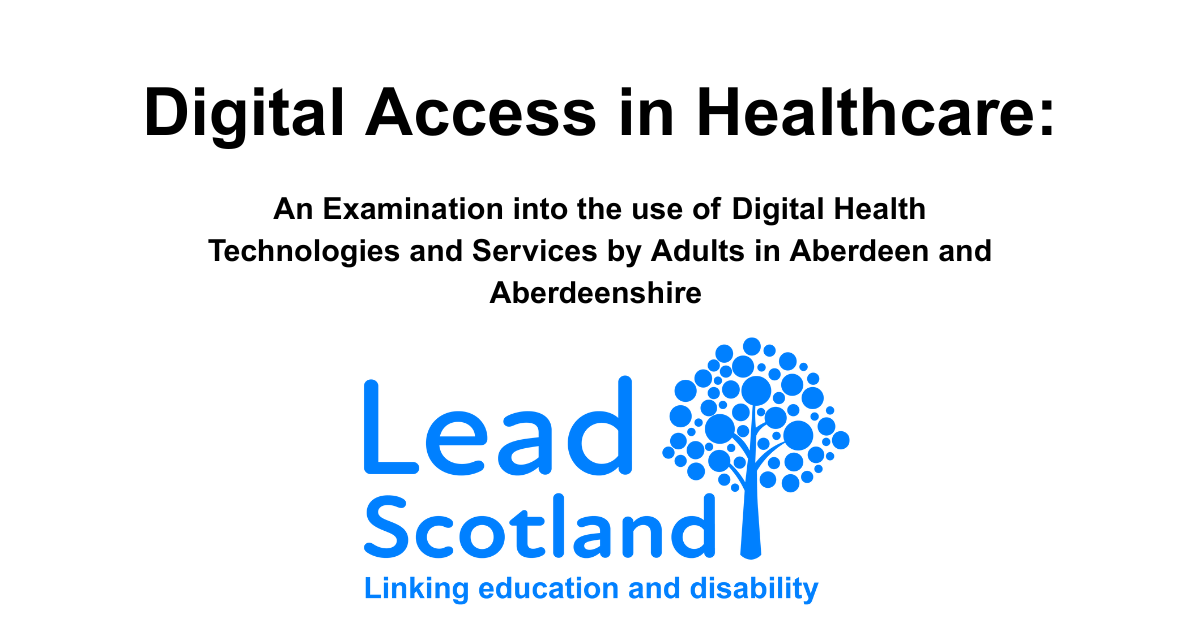
Digital Access in Healthcare Research
Lead Scotland are proud to introduce their latest research report, Digital Access in Healthcare. The report shines a spotlight on the digital barriers faced by disabled adults in Aberdeen and Aberdeenshire, drawing on insights from public and GP surveys, as well as focus groups, the report explores how digital health technologies are impacting access to care—and where gaps remain. With powerful stories and data, the report calls for inclusive design, long-term support, and real choice in how people engage with healthcare. This is essential reading for anyone working to make digital health truly accessible for all.
Click here to read the full Digital Access in Healthcare report – SWAY version
Click here to read the full Digital Access in Healthcare report – PDF version
Key Findings from the Research:
1. Digital Inequality is Widespread
- Many disabled adults face multiple, intersecting barriers—including poverty, rural isolation, and lack of digital skills.
- 93.8% of respondents had smartphones, but only 75.5% had SIM cards with data.
- 35 respondents lacked access to essential devices or internet, citing cost and lack of skills.
2. Confidence and Skills Gaps
- Around 45% of respondents wanted help with digital skills.
- One-third lacked confidence using digital tools for healthcare.
- Many were unaware of available support or how to access it.
3. Limited Use of Digital Health Services
- Over 50% had never used digital tools like e-consult, NHS apps, or video consultations.
- 40.5% preferred contacting GPs by phone; only 25% preferred online services.
4. Accessibility and Design Issues
- GP websites often lacked accessibility features (e.g., font size adjustment, screen reader compatibility).
- Many Practice Managers were unaware of their websites’ accessibility or how many disabled patients they served.
5. Lack of Support and Signposting
- Only 11 out of 225 respondents had been signposted to digital support by healthcare professionals.
- 83% didn’t know of any local organisations offering digital skills training.
Conclusions:
- There is a disconnect between policy and practice: while national strategies promote digital inclusion, many disabled adults are being left behind.
- Digital health services must be designed with accessibility and choice in mind.
- Face-to-face, long-term, and local support is essential for building digital confidence and independence.
Recommendations:
- Improve accessibility of GP websites and digital platforms.
- Involve disabled people in the design and evaluation of digital health services.
- Ensure real choice between digital and non-digital healthcare access.
- Fund long-term, community-based digital skills support, especially in rural areas.
- Strengthen partnerships between public services and third-sector organisations.
